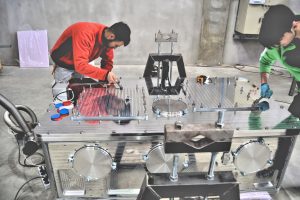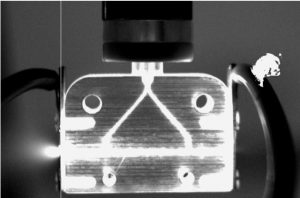 The EXIN (external injection) project born from the challenge to combine conventional accelerators with plasma accelerators.
The EXIN (external injection) project born from the challenge to combine conventional accelerators with plasma accelerators.
La differenza principale tra questi tipi di acceleratori sta nel massimo campo accelerante che questi possono fornire: da una The main difference between those accelerators is in the maximum accelerating fields they can supply: conventional accelerators are limited by electrical breakdown to accelerating fields of the order of 10-100 MV/m while, on the other hand, plasma accelerators can supply accelerating fields of the order of 10-100GV/m. However, electrons accelerated by plasma accelerators have very poor quality (high energy spread and high emittance and therefore low brightness), which makes difficult their use for monochromatic radiation production – both for synchrotron radiation and free-electron laser –, while electrons accelerated conventionally, even reaching much lower energies being equal the accelerating distance, can reach very high quality (low energy spread and low emittance and therefore high brightness).
The EXIN project wants to use the high accelerating fields that can be reached by the plasma accelerators to further accelerate the high quality electron beams accelerated by the conventional accelerator SPARC and above all, maintain the high brightness of the electron beam.
This will be done by shooting a high power laser beam (FLAME) inside a hydrogen filled capillary tube; the laser beam will ionize the hydrogen and will create plasma waves: electron beams will be injected on this plasma wave and will be post-accelerated – exactly as would do a surfer on a sea wave.
 INFN-LNF Laboratori Nazionali di Frascati
INFN-LNF Laboratori Nazionali di Frascati
